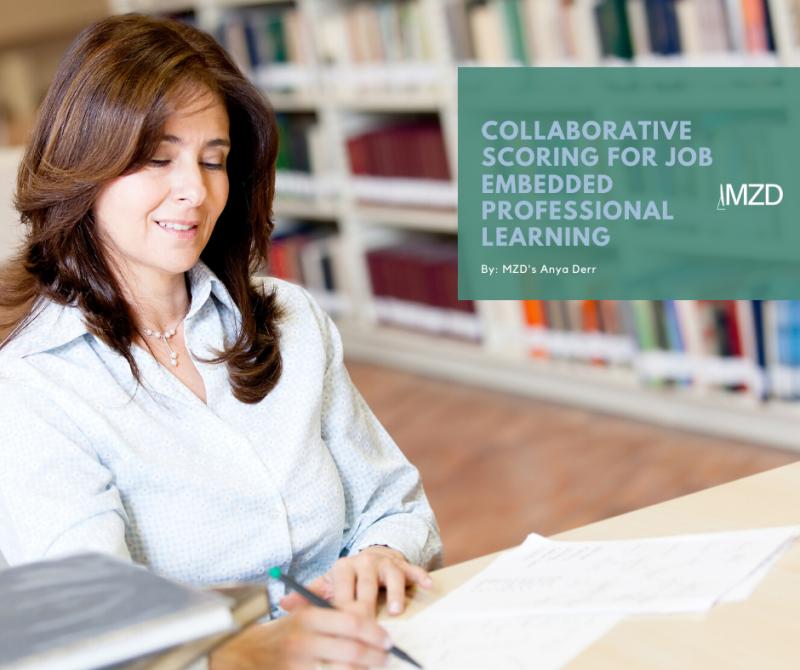Generally speaking, grading student work tends to be a solitary endeavor. A teacher collects student assignments, adds any relevant corrections or notes, assigns it a score and sends it back to the student. It seems like a pretty straightforward process but what it doesn’t take into account is how one teacher may be grading in relation to other teachers.
Just as each teacher has their own style of teaching, instructional strategies, personal background and varying levels of experience in the classroom, each teacher has their own approach to grading, especially when it comes to more subjective tasks like writing. The introduction of rubrics for common performance assessments, helps unify teachers in comparing student work to specific, grading components and their subsequent scores. But even with a common rubric, if each teacher continues to evaluate student work without insight or input from others, they miss a vital opportunity for learning through collaboration.
Perhaps the most influential and applicable learning experiences in my teaching program, as well as my early years in the classroom, were observing and collaborating with other teachers. The process of norming and scoring of performance assessments presents a unique opportunity for teachers to take advantage of a collaborative process for professional learning. Sharing student work with others and communicating around how different educators score in relation to one another, opens a dialogue to discuss and resolve discrepancies in evaluation, gain new understanding and an opportunity to reflect on teaching practices. And given new technology, this work can now be done online.
Often given a lack of funding, time or additional resources teachers have been unable to work collectively as a group beyond their own buildings. With OSCAR Classroom technology, teachers can submit student responses with their scores applied to a second anonymous scorer and have a collaborative dialogue about grading practices after all the scores have been submitted. This gives teachers additional insight into how they evaluate student work, ensures more consistent scoring and helps decrease unconscious bias. In addition, teachers will have access to score more diverse examples of student work that may be vastly different from what they see in their own schools or classrooms, broadening their understanding of what “meets” and “exceeds expectations.”
With coaches and content teams typically supporting the creation of content or the support in the instruction of content, rarely will they be involved in grading of the final product. With OSCAR Classroom, these coaches and/or content experts can now serve as a resolution scorer. This is a unique opportunity to compare the interpretation of student work. Often as educators we agree on what we are teaching however, what may become more subjective is how it is taught and how it is evaluated. Coaches play incredibly important roles in the classroom today to support the “how” and now they have an opportunity to evaluate the final product.
Conversations around scoring provide a unique opportunity for teachers and coaches to learn from one another and ensure consistent grading practices. OSCAR Classroom creates an environment for collaboration, enabling teachers to participate in true, job embedded professional learning.



